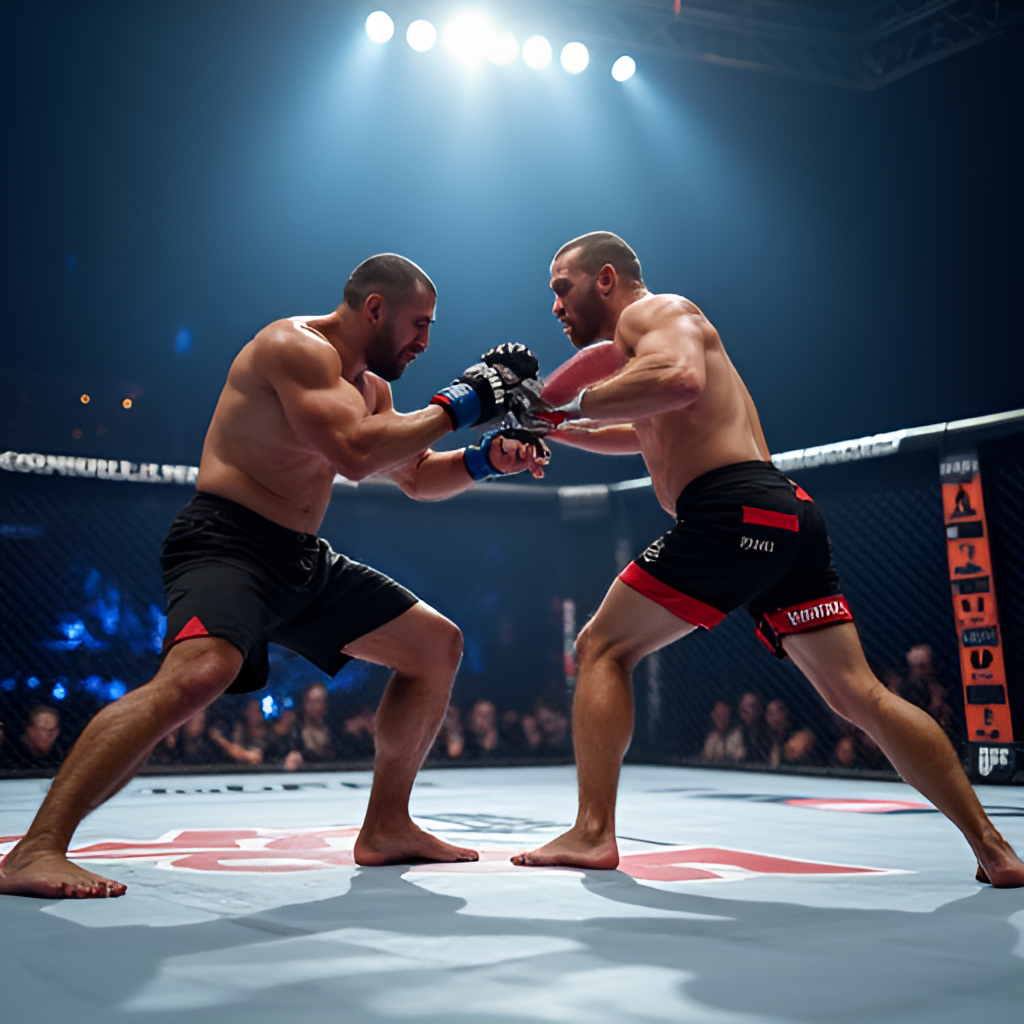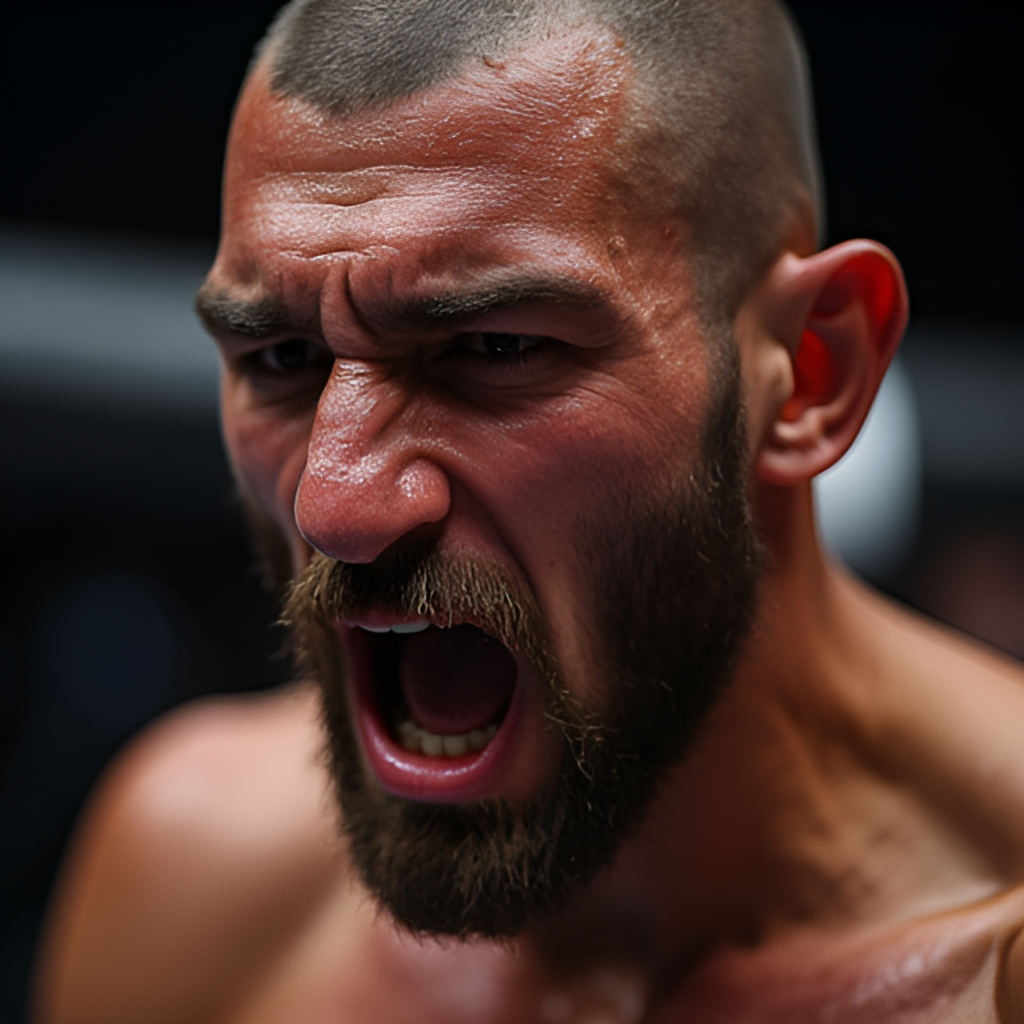UFC Fighting: The Evolution of the Octagon
- Introduction: Stepping into the World of UFC Fighting
- Origins and Evolution: The Birth of MMA Fights
- Inside the Octagon: What Makes UFC Bouts Electrifying
- Training Like a Pro: The Rigors of Being a UFC Athlete
- Navigating the Landscape: UFC Weight Classes and Championships
- Beyond the Fights: The Business of Mixed Martial Arts Competition
- My Take: Why UFC Continues to Captivate
- The Future: What’s Next for UFC Fighting?
- Conclusion: The Enduring Impact of UFC Fighting
UFC fighting is among the most electrifying and rapidly growing sports globally, captivating millions with its blend of skill, strategy, and raw athleticism. As someone who’s followed the sport for years, attending events and even dabbling in some martial arts training myself, I can attest to the unique energy surrounding every MMA fight within the Ultimate Fighting Championship banner. It’s more than just a competition; it’s a spectacle of human capability.
Origins and Evolution: The Birth of MMA Fights
The journey of UFC fighting, and mixed martial arts (MMA) as a whole, is a fascinating story of evolution. It began in 1993 with UFC 1, held in Denver, Colorado . The initial concept, spearheaded by figures like Art Davie and Rorion Gracie, was simple yet revolutionary: pit fighters from different martial arts disciplines against each other to see which style was the most effective . Think a wrestler vs. a boxer, a jiu-jitsu practitioner vs. a karate expert. Early events had minimal rules and no weight classes, often leading to dramatic, albeit sometimes chaotic, UFC bouts .
Over time, the sport recognized the need for structure and safety. Under the ownership of Zuffa, LLC, led by Frank and Lorenzo Fertitta and Dana White from 2001, significant changes were implemented, introducing more rigorous rules and, crucially, weight classes . This transformation moved UFC from a “human cockfighting” spectacle, as once labeled, to a more regulated and respected athletic competition . This evolution wasn’t just about rules; it fostered the development of true mixed martial artists who could blend techniques from various disciplines, fundamentally shaping the landscape of mixed martial arts competition .
Inside the Octagon: What Makes UFC Bouts Electrifying
The Octagon, the trademarked eight-sided cage, is the iconic battleground for UFC bouts . What unfolds within those fences is a complex dance of striking, grappling, and submissions. Unlike single-discipline sports, MMA fighters must be proficient in multiple areas – boxing, wrestling, judo, jiu-jitsu, karate, Muay Thai, and more . This necessity for versatility makes each fight unpredictable and exciting. You might see a fighter known for devastating knockouts go up against a submission specialist, creating a captivating clash of styles. It’s this intricate blend that makes UFC fighting so compelling to watch.
The intensity is palpable. I remember watching a live event once, and the sound of strikes landing, the cheers and gasps from the crowd – it was an immersion you don’t get just watching on screen. Every movement, every transition matters. A single mistake can lead to a fight-ending knockout or a tap-out due to a well-applied submission. The drama isn’t manufactured; it’s the result of two highly skilled athletes pushing their physical and mental limits against each other. This raw authenticity is a huge part of the UFC’s appeal.

This image is a fictional image generated by GlobalTrendHub.
Training Like a Pro: The Rigors of Being a UFC Athlete
Becoming a UFC fighter requires an almost unimaginable level of dedication and a grueling training regimen. It’s not just about hitting the gym; it’s a multi-faceted approach that covers striking, grappling, strength and conditioning, and recovery . Fighters spend countless hours honing their techniques in various martial arts, drilling transitions between standing and ground fighting, and sparring to simulate real fight scenarios. .
Strength and conditioning are crucial for building the power, endurance, and explosive athleticism needed to compete at the highest level. . Workouts often involve multi-joint movements, plyometrics, and intense cardio to prepare the body for the demands of a fight . And let’s not forget the mental aspect – the discipline required for consistent training, the strategic planning for each opponent, and the sheer willpower to step into the Octagon. It’s a 24/7 commitment that goes far beyond what most people imagine.
Weight cutting is another significant, albeit controversial, part of a fighter’s life. Athletes often dehydrate themselves significantly in the days leading up to a weigh-in to compete in a lower weight class, only to rehydrate before the fight. . This process is physically taxing and requires immense mental fortitude. Training like a UFC fighter is a full-time job, demanding sacrifices and pushing the boundaries of human capability.
Navigating the Landscape: UFC Weight Classes and Championships
To ensure fair competition, UFC fighting utilizes a system of weight classes, ranging from the lighter divisions like Strawweight and Flyweight up to the Heavyweight division . Each division has a specific weight limit that fighters must meet at the official weigh-in before a bout. This structure prevents significant size mismatches, allowing skill and technique to be the primary determinants of victory .
Within each weight class, fighters vie for the coveted championship title. These titles represent the pinnacle of achievement in the sport. Champions are considered the best in the world in their respective divisions, defending their belts against top contenders. The journey to a championship is often a long and arduous one, involving a series of challenging fights against ranked opponents . The champions, like Islam Makhachev, Leon Edwards, or Amanda Nunes, become icons of the sport, their legacies defined by their reigns and the memorable UFC matches they’ve been a part of. .
Beyond the Fights: The Business of Mixed Martial Arts Competition
While the action in the Octagon is the focus for fans, the Ultimate Fighting Championship is also a highly successful and complex business enterprise. Since its sale to Zuffa in 2001 and later to Endeavor in 2016 for over $4 billion, the UFC has become a global sports powerhouse . Its business model is multifaceted, relying heavily on pay-per-view sales for major events, lucrative media rights deals with broadcasters like ESPN, live event ticket sales, sponsorships, and merchandise .
The promotion has been incredibly effective at marketing its athletes, turning fighters into global superstars with compelling personalities and stories . Reality shows like “The Ultimate Fighter” have also played a crucial role in building fan interest and discovering new talent . The UFC’s ability to consistently deliver high-quality, entertaining events and market its stars effectively has been key to its massive growth and profitability in the competitive world of mixed martial arts leagues .

This image is a fictional image generated by GlobalTrendHub.
My Take: Why UFC Continues to Captivate
From my vantage point as a long-time fan, what truly sets UFC fighting apart is its raw, unscripted nature. You never quite know what’s going to happen when that cage door closes. Will it be a quick, explosive knockout? A grinding, strategic grappling match? A back-and-forth war that goes the distance? This unpredictability is addictive.
I’ve also found myself increasingly invested in the fighter’s journeys. Hearing their stories, understanding the sacrifices they make, and seeing their dedication in training camps – it adds a layer of human drama that resonates deeply. It’s not just about the punch or the submission; it’s about the culmination of years of hard work and chasing a dream. And honestly, sometimes you just appreciate the sheer athleticism and skill on display. Watching someone execute a perfect takedown defense or land a perfectly timed head kick is just… cool.
“The Octagon is where dreams are forged and legends are made. Every fight is a story waiting to unfold.”
It’s this blend of authentic competition, compelling narratives, and incredible athletic feats that keeps me, and millions of others, hooked on UFC fighting. It feels real because it *is* real.
The Future: What’s Next for UFC Fighting?
Looking ahead, the future of UFC fighting seems incredibly bright, though not without its potential challenges. The sport continues to expand globally, reaching new markets and attracting talent from all corners of the world . Technological advancements could play a larger role, from enhanced training methods using AI and data analytics to potentially immersive VR/AR experiences for fans . Dana White himself has expressed a belief that the sport’s ceiling is incredibly high, potentially reaching billions of viewers worldwide .
However, there are ongoing discussions and challenges, such as fighter pay and long-term health concerns related to the sport . Addressing these issues will be crucial for the sustainable growth and ethical standing of the UFC. Despite this, the fundamental appeal of professional MMA remains strong, and the talent pool continues to grow. We could see even more specialized athletes, further evolution in fighting styles, and perhaps new weight classes or rule adjustments in the coming decades . It’s clear the sport is not standing still.
Conclusion: The Enduring Impact of UFC Fighting
In conclusion, UFC fighting has come a long way from its no-holds-barred origins to become a dominant force in the global sports landscape. Its unique blend of diverse martial arts, the raw intensity of competition within the Octagon, and the compelling stories of its athletes create an unparalleled spectator experience. As someone who’s witnessed its growth and felt the energy of its events, I firmly believe that UFC fighting will continue to evolve and captivate audiences worldwide. The blend of tradition and innovation ensures that the Octagon will remain a place where athletic greatness is tested and celebrated for years to come.